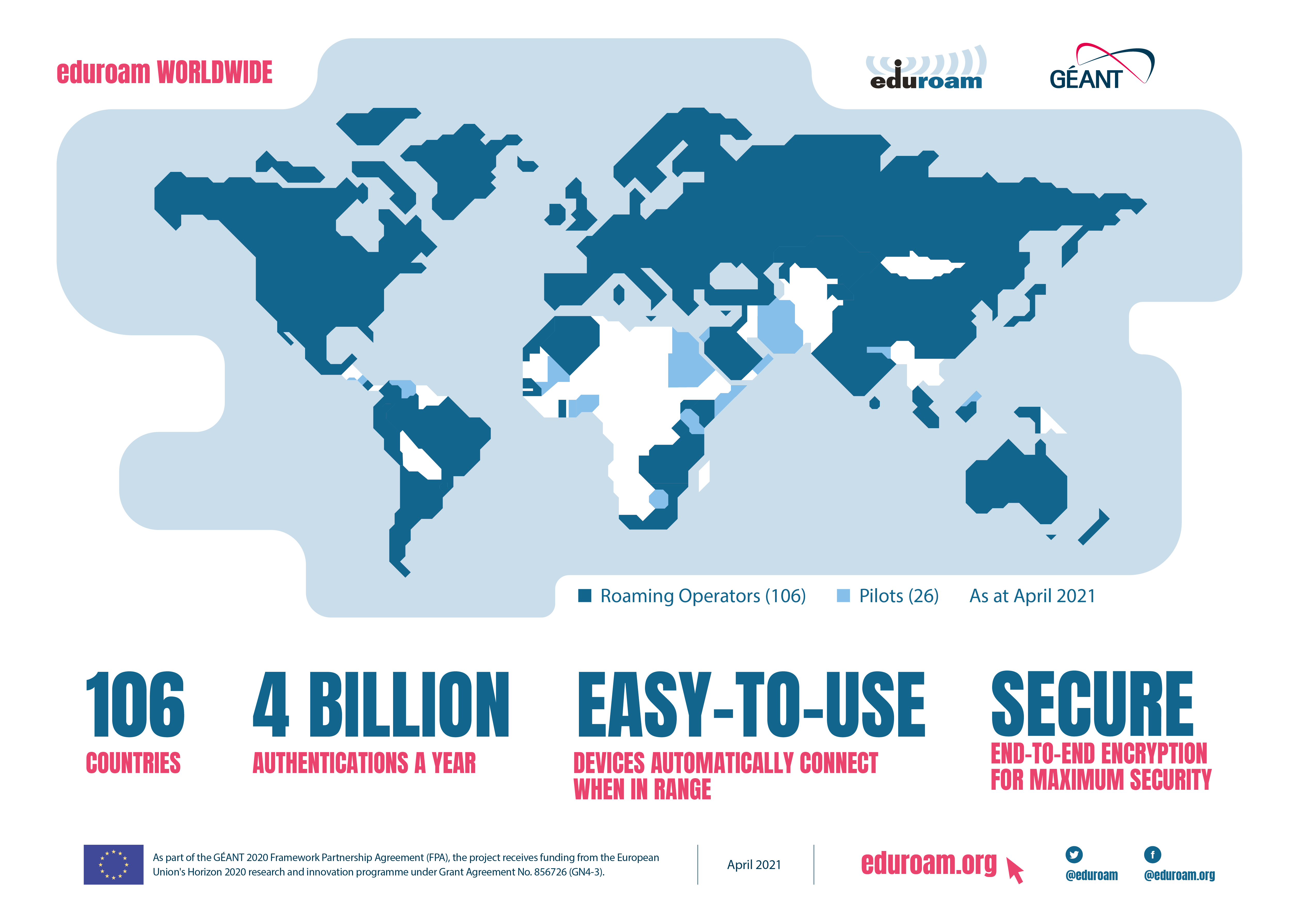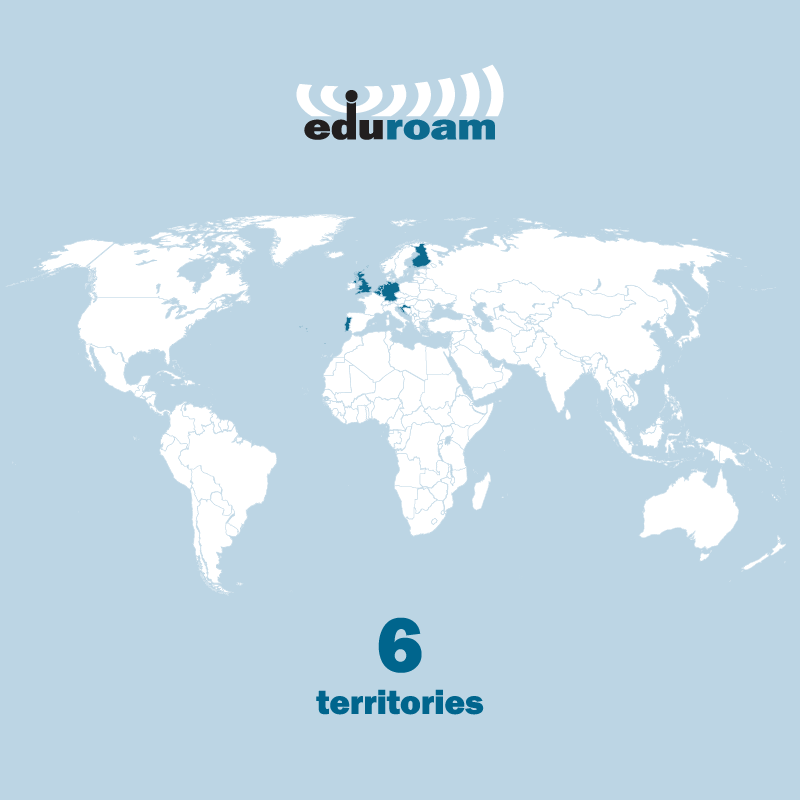At the end of June 2021, at the TNC21 conference, the annual European community of National Research and Education Networks (NREN) conference, Stefan Winter, research engineer and Chief Technology Officer at the Restena Foundation, retraced the evolution of the eduroam service. Together with his Croatian counterpart from the University Computing Centre - another member of the international Research & Development (R&D) team - he highlighted the development milestones of this secure and automatic Wi-Fi connection, available at universities and research institutions worldwide.
From one single project to millions of users
The first idea of an ‘inter NREN roaming’ emerged in 2002 under the initiative of Klaas Wierenga, who has since been inducted into the Internet Hall of Fame, as the inventor of the eduroam international Wi-Fi roaming service. Developed within the European GÉANT project - co-funded by the EU's Horizon 2020 research and innovation programme and the NRENs - the service was launched in 2008 six years and a prototype later.
In 13 years, eduroam has gone far beyond its initial ambitions. Not only has it established itself among the European NRENs, but it is also connecting research and education beyond the borders of the Old Continent. More than 8,000 institutions from over 100 countries on all continents benefit from eduroam for their employees and students. This sprawling scope represents, among other things, hundreds of millions of international authentications every year.
Luxembourg's commitment
eduroam's technical development is driven from Luxembourg by the Restena Foundation, which has been involved in the regular integration of new functionalities since its launch. Throughout these years, it is clear that the various technical evolutions implemented by eduroam are marked by a constant adaptation to the long-running movement of the Wi-Fi industry.
Numerous projects and collaborations have been carried out with leading institutions in the Wi-Fi area, such as the Institute of Electrical and Electronics Engineers (IEEE), the Internet Engineering Task Force (IETF), the Wi-fi Alliance and, more recently, the Wireless Broadband Alliance (WBA). These actions have enabled eduroam not only to establish itself in the research and education landscape with the permanent addition of new services, such as eduroam managed IdP, or eduroam Visitor Access, but above all to become a technical reference in the field.
A global technical reference
In 2015, the technical reference document 'The eduroam Architecture for Network Roaming', for which Stefan Winter is a co-author, was published by the Internet Engineering Task Force in RFC 7593. Since then, new players in Wi-Fi roaming, such as libroam and govroam, came up across the globe the world using the technology developed by eduroam.
Access to an automatic and secure Wi-Fi network is no longer reserved for research and education. Wi-Fi roaming evolves such that a kind of 'super-eduroam' is emerging. The Wireless Broadband Alliance (WBA) Open Roaming, an internationally active roaming federation service that brings together an ecosystem of networks and identity providers, aims to provide automatic and secure Wi-Fi access to everyone on the planet. It is now up to eduroam, in the future, to decide whether or not to be part of this international adventure and to find the right technical development directions.


